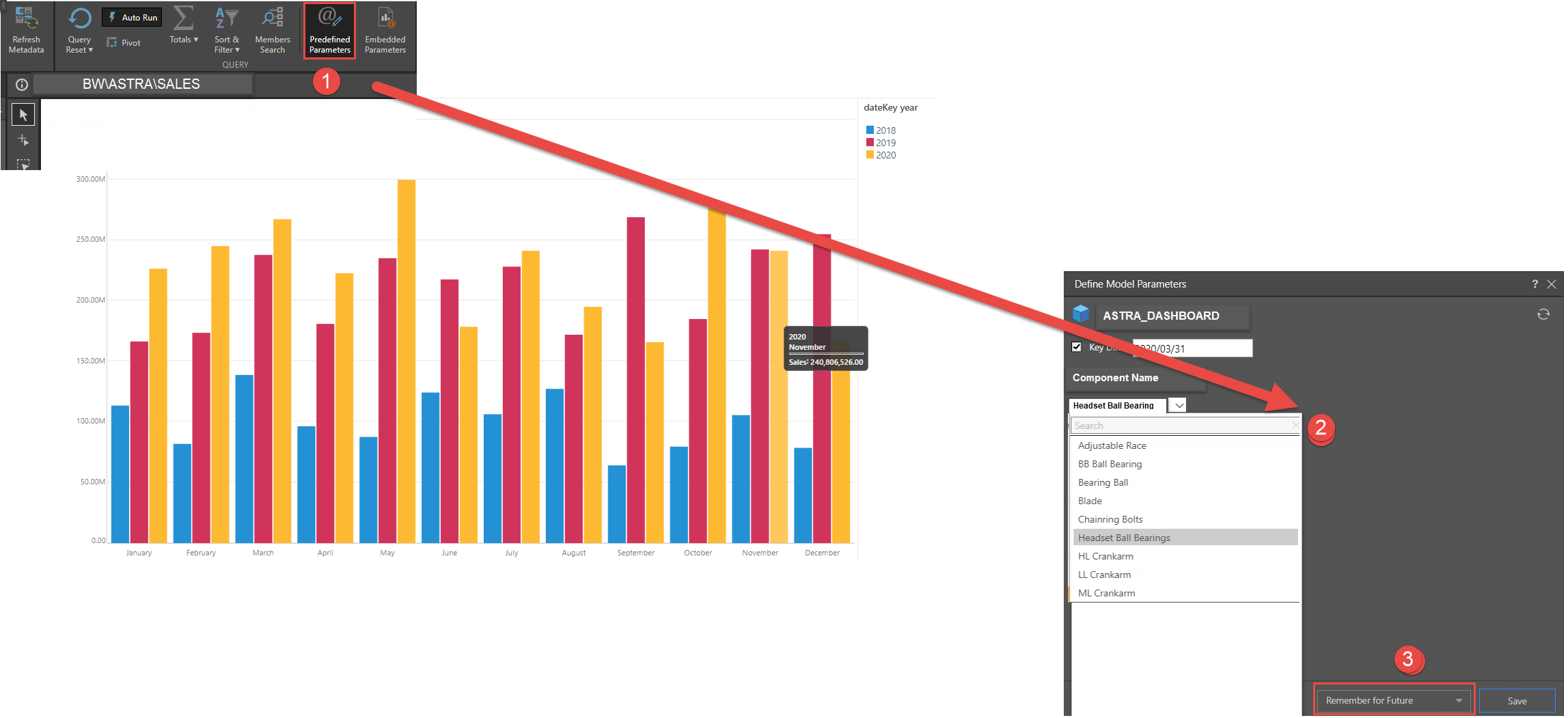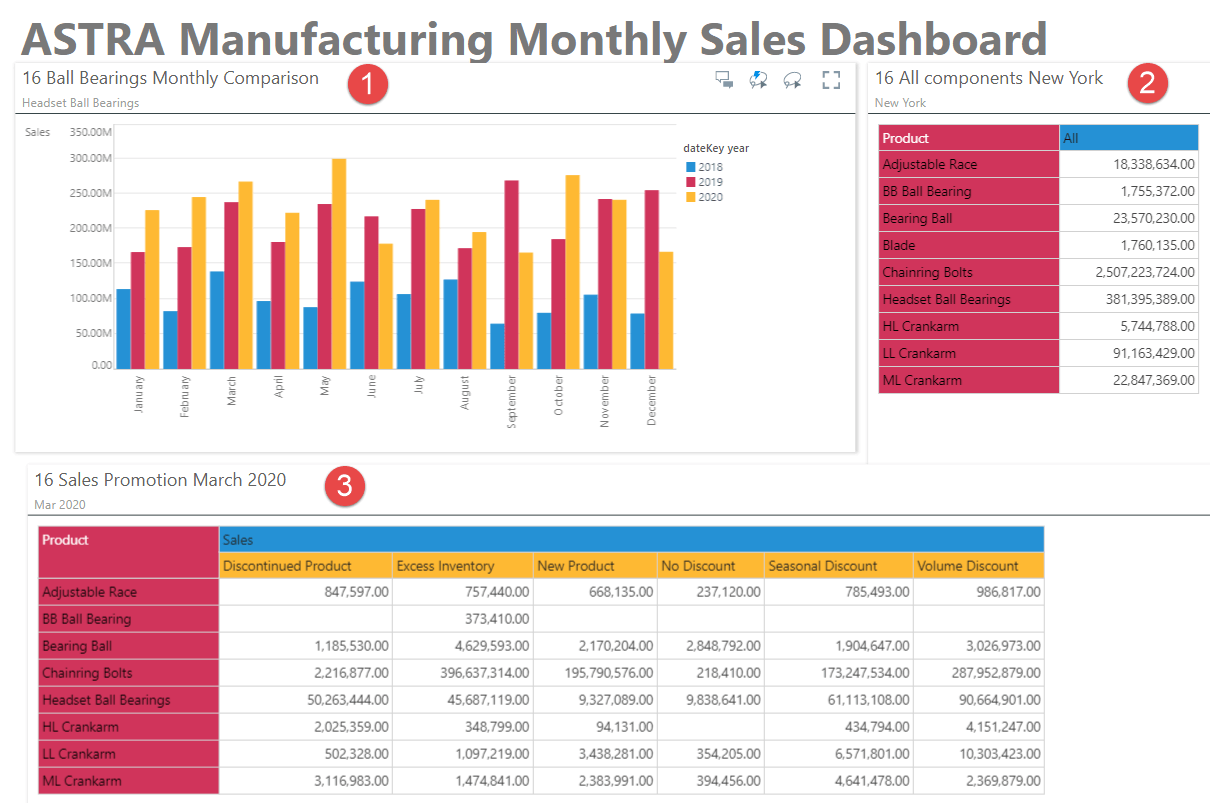Pyramid is an official member of the SAP® PartnerEdge® open ecosystem and is fully certified by SAP on SAP BW/4HANA, SAP HANA, and SAP Netweaver. The Pyramid Platform is also available on the SAP Store.
In previous SAP-focused blogs, I discussed Pyramid’s unique capabilities for SAP BW and HANA.
In this blog, I will address Pyramid’s ability to handle BW and HANA parameters.
SAP BW and HANA variables
SAP BW and HANA users typically have massive datasets. The ability to dynamically query different subsets of their datasets, amongst many other things, is a critical capability. Consequently, SAP BW and HANA have provided parameters and variables to inject settings at run time to change how queries and logic are executed. This optimizes query performance in several ways. First, it facilitates query optimization by running on a reduced subset of data. Second, it provides a method of dynamically altering the query by changing hierarchies, logic, and calculations and controlling different snapshots of the data to be queried.
Challenges
Many third-party tools can handle and pass parameters to SAP BW and HANA. However, they can often only pass a single set of variables per data model. Others cannot handle the wide variety of functionality exposed through SAP parameters and variables at all (like Excel!). And for those that do handle them, a separate connection to the data model or session is required each time the variable is changed, such as when the variable needs to be changed for multiple types, for multiple users, or in multiple venues. This inflexibility defeats the purpose of having variables and parameters in the first place—and heavily blunts their impact on the reporting process.
Worse still, many third-party tools tend to encourage users to export their raw data out of SAP and reimport it into their native data stacks to get better analytical functionality. Duplication of data runs contrary to the entire concept of using BW and HANA in the first place (breaching data governance and security, decentralizing the “truth,” etc.). What’s more, it voids the often critical functionality built into the parameters and variables—which are not present in their external tools. So, while they may offer self-service capability, the third-party tools come at a high price. It’s the reason why many SAP customers will not consider these BI vendors for BW and HANA installations.
Pyramid’s approach
Pyramid provides a world-class self-service BI tool running directly on BW and HANA. It makes proper use of its parameter and variables technology for queries—with no loss of analytic dexterity. And it works for multiple users and multiple models in multiple venues. Pyramid connects dynamically to the same SAP data source, so you only have to connect once to the data source. Each time a different query needs to be run, different parameters can be passed to the query by user, by report, per session, or any combination thereof.
Business case
Lisa, the COO of international electronic components company Astra Manufacturers, has an SAP BW system. Astra has 25 factories worldwide, each focusing on components required in their region. Due to the massive datasets, Astra has implemented parameterization on their SAP BW system, where queries run much faster by limiting the subset of data being queried.
Mike, a BI Analyst at Astra, often analyzes sales of a single component across several branches. At other times he analyzes several components at a single branch. Changing data views seemed simple, but it was a huge challenge with his existing BI tool, which ultimately forced Lisa to extract her raw data on her own to run the analysis—losing the parameterization capabilities along the way.
Lisa and Mike shifted to Pyramid which offered dynamic parameterization with a single data model across multiple reports—and even across different visualizations within the same dashboard or publication. In addition, each report was able to remember and default to the parameter last used.
Monthly Component Report
In this Monthly Component Report, a component—Headset Ball Bearings—is selected in Pyramid using SAP BW’s variables. The selection used by this report is “remembered” and will be used automatically the next time this user accesses the report.

- Variables are accessed in the report by clicking on the Predefined Parameters icon.
- Headset Ball Bearings is selected for the Component Name hierarchy in a popup Parameter screen.
- The selected parameter is optionally remembered for this report for this user.
Monthly Sales Dashboard
This dashboard contains three different visualizations (two from BW and one from HANA), each with different variables selected from their respective pop-up parameter screens. A single data connection is used for the creation of all dashboards simultaneously.

- Ball Bearing Component selected from the Component hierarchy (as in previous diagram).
- New York Branch selected from the Branches hierarchy.
- March 2020 selected from the Date hierarchy.
Pyramid enables total flexibility where the user can dynamically select multiple factories, components, or months using the same data model. This is a game-changer for Mike who no longer needs to worry about creating different data models and reloading the data for every analysis that he does. In addition, Pyramid can automatically supply a different parameter for each branch manager to view his branch, also using the same data model. Pyramid also has optional functionality to remember the last parameters selected and defaults them for future analysis.
Conclusion
In this blog, we have seen how Pyramid enables multiple data connections to SAP, with each occurrence utilizing unique parameters, taking full advantage of SAP’s parameterized design without needing to extract data from alternative engines.
In my next blog, I will deal with another critical aspect of SAP BW parameterization: SAP BW time-dependent hierarchies.
In my future blogs, I also will discuss additional features unique to SAP BW that are supported by Pyramid. This includes:
- Support for ragged hierarchies, numerical formats, multiple currencies, and captions
- Support for time-dependent hierarchies
SAP and Pyramid Analytics
Pyramid solves this entire problem with a complete solution that offers real self-service working directly on SAP BW and HANA. How? By delivering best-in-class functionality and performance on SAP BW without extracting or duplicating data, Pyramid preserves the full analytic power of the SAP engines, as well as the inherent security and governance.
Please explore our Pyramid + SAP Blog Series to learn how Pyramid supports our customers on SAP and set up a demo today. Each post contains specific examples to illustrate key functionality:
- Real self-service BI for SAP
- Self-service BI directly on SAP BW
- Collaborative analytics for SAP BW and HANA
- Time intelligence for SAP BW and HANA
- Running Totals Made Easy for SAP HANA and BW
- Dashboards and report bursting directly off SAP BW and HANA
- Realizing the power of parameters in SAP BW and HANA
- SAP BW Time-Dependent Hierarchies
- Ragged Hierarchies and Data Formats in SAP BW
- Building Calculations directly on SAP BW and HANA
- Building data models into SAP HANA














